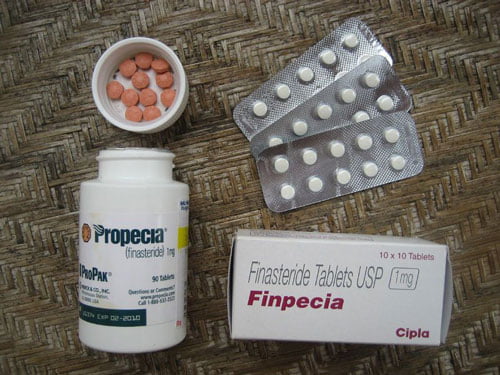
Photo © Shutterstock.com/itakdalee
At the 2018 Winter Olympics in Pyeongchang, South Korea, gold medalists from the Russian Federation didn’t wrap themselves in the Russian flag—literally or figuratively—as they stood on the podium, nor did they tear up to the stirring strains of the Russian national anthem. Instead, they received their medals under the neutral banner of the Olympic flag as the somewhat uninspiring Olympic anthem played in the background.
That’s because once again, Russian competitors found themselves behind the doping eight-ball when the International Olympic Committee banned all but those individuals who could demonstrate their “cleanliness” from competing in the latest games. And while the stakes aren’t nearly as high for the average weekend warrior—assuming that a friendly game of tennis even has stakes—the lesson remains the same: play clean or go home.
But what does clean even mean to the recreational athlete—or to the lifestyle consumer who just takes selfies at the gym? For them, the concern may be less about performance-enhancing steroids than “natural” flavors, vegan coatings, and ingredients you don’t need a team nutritionist to recognize. Either way, as consumers grow more adamant about labeling and transparency in general, it’s worth exploring why keeping the sports-supplement arena clean matters.
Supplements Not Immune
Whether you’re a sponsored pro or simply a spectator, there’s no denying: Even the low-stakes realm of sports-nutrition supplements has suffered its own sort of “doping” scandals. But the issue hasn’t just been the presence of unapproved ingredients; safety issues have emerged, too.
Citing his organization’s and others’ research, Brian Jordan, technical manager of NSF International’s (Ann Arbor, MI) Certified for Sport program, states, “We know that some sports supplements contain mislabeled ingredients, potentially harmful compounds, and synthetic stimulants—many of which are illegal dietary ingredients and are banned in sport.”
Researchers have identified as the highest-risk supplements those in the pre-workout, muscle building, weight loss, and sexual enhancement categories. “That definitely includes many products considered ‘sports nutrition,’” Jordan says. “And this is more than just a problem for athletes concerned about inadvertent doping; some of these stimulants are known to cause harmful side effects like cardiovascular and neurological problems. And again: they are not legal dietary ingredients.”
He traces their emergence to the banning of ephedrine in 2004—after which “some manufacturers have been searching for another ingredient that will provide that same stimulant kick.” That’s why many unapproved and potentially dangerous copycat stimulants have turned up in supplements, including DEPEA (N,alpha-diethylphenylethylamine, a close chemical analog of methamphetamine), DMAA (1,3-dimethylamylamine, a stimulant that when combined with ingredients like caffeine can pose health risks), DMBA (1,3-dimethylbutylamine, chemically similar to DMAA), and the World Anti-Doping Agency (WADA)-prohibited stimulant oxilofrine.
Recently, NSF and Harvard Medical School scientists published research1 in the journal Clinical Toxicology showing that six pre-workout and weight-loss products that claimed to contain Aconitum kusnezoffii actually contained unapproved DMAA-like stimulants. So it should come as no surprise that “we’ve seen a big increase in the number of athletes and consumers who are aware of the risks related to untested and uncertified sports nutrition products,” Jordan says.
Certifiable
Indeed, the Natural Marketing Institute’s 2018 Supplements/OTC/Rx Database (SORD) survey found that a majority of consumers—53%, to be exact—expressed concern about tainted or illegal ingredients in supplements. It’s these consumers, Jordan says, who “want quality products through verification of sport supplement contents.”
In other words, they want certification. “It’s all about trust,” he insists. “There are a lot of products out there making a lot of incredible claims. But how do you trust those claims without any sort of independent verification? I personally won’t take any supplement unless it’s independently tested and certified.”
Among the labs and organizations providing such testing and certifications are France’s SPORT Protect, UK-based HFL, Informed-Sport and Labdoor, and, of course, Jordan’s own organization, NSF International.
How does NSF do it? It starts by certifying that any product coming under its purview adheres to the requirements outlined in NSF/ANSI 173—the American National Standard for dietary supplements, which stipulates, among other things, that products be made in a facility inspected twice annually to comply with GMPs. Then NSF verifies label claims and ensures that no harmful levels of specific contaminants or fraudulent ingredients are present. After that, ongoing auditing and testing confirm continued compliance. To date, Jordan says, “more than 1,000 supplement products and ingredients are certified to the NSF/ANSI 173 dietary supplement standard.”
And for sports nutrition, NSF subjects products to the assessments outlined above while also testing on a lot-by-lot basis for more than 270 athletic banned substances. Passing this test earns a product NSF’s Certified for Sport imprimatur, which Jordan says carries real weight with elite and pro athletes, as well as those who train, feed, and care for them.
“Major League Baseball, the National Hockey League, and Canadian Football League clubs and coaches are only allowed to give players supplements that are Certified for Sport,” he notes. The NFL, PGA, LPGA, CCES, CPSDA, and Taylor Hooton Foundation also recommend the certification. “Many pro athletes and even consumers are using our new Certified for Sport app” to find supplements that pass the test, he adds. “We always encourage athletes and consumers to take only supplements that are independently tested and certified. That’s the only way to know what’s really in the products.”
What Clean Means
While such certifications go far in guiding consumers to supplements that are safe and “dope”-free, a significant share of the supplement-using population is less interested in knowing whether or not a protein shake will land them on WADA’s blacklist than in how “green” its ingredients are.
For while 53% of those consumers participating in the Natural Marketing Institute’s SORD survey registered concern over illegal or tainted supplement ingredients, fully 58% look specifically for non-GMO certification. Further, the share of consumers preferring supplements from “natural” and organic sources has grown 39% and 27%, respectively, since 2009.
“It used to be that ‘clean’ sports nutrition supplements were those that were unadulterated or not cut with synthetic ingredients such as steroids,” says Annie Eng, CEO, HP Ingredients (Bradenton, FL). “Now, as sports supplements such as proteins and botanicals that allow for extended workouts are more mainstream for sports enthusiasts, clean means fewer additives, non-GMO, organic”—the same thing it means everywhere else.
And we can credit “mainstream” users for driving that shift. “The sports nutrition consumer now includes thirty-something moms and dads—not just hardcore gym rats—and these are the same consumers who understand and demand cleaner products,” Eng continues. “Younger men in their teens and twenties who body-build likely don’t care as much—until they get older.”
Barri Sigvertsen, marketing manager, Lonza Consumer Health & Nutrition (Basel, Switzerland), agrees. “Today, there is no typical sports-nutrition consumer,” he says. “Marketers say it’s quickly evolving into an active-nutrition market fueled by healthy living and fitness trends largely driven by Millennials and GenXers, as well as by seniors bent on maintaining mobility and independence. The on-the-go demand and lifestyle users who are young and affluent but unwilling to sacrifice health-and-wellness claims such as organic, natural, sustainable, vegan, and non-GMO—even in their sports nutrition products—have also generated interest in new, clean-label, non-animal products.”
All in Good Taste
But as anyone who’s struggled with translating “clean” into an actual formulation can attest, a considerable gulf stands between concept and execution. Consider, for example, a task as deceptively simple as choosing a product flavor.
Notes Will McCormack, business development manager, nutrition, Synergy Flavors (Wauconda, IL), there was a time when sports nutrition products didn’t even bother with flavor. In the 1980s, a whey-protein drink mix was just that: whey protein. “But that product got less ‘clean’ from there on because for brands to grow beyond the core user, the product’s organoleptic properties had to improve. The addition of a sweetener and flavor system greatly assisted with that, but if you think of that in today’s terms, it immediately means that the label was less clean.”
Now, sports-nutrition products have to be all things to all audiences—virtuous enough for the label-readers and tasty enough for heavy users to keep chugging through the last set. And making that happen, McCormack says, is not easy.
“The ‘cleaner’ a product is,” he says, “the more organoleptic issues you’ll have. It’s the simple fact that artificial sweetener systems and natural-and-artificial flavor systems work really, really well. When you move toward all that nature can offer, ingredients tend not to be as potent. So you’re trying to find that sweet spot between using a natural sweetener and flavor system while still trying to maintain a really good organoleptic profile.”
That’s why it’s so important that formulators determine just how adament users are about avoiding “artificial” flavors, sweeteners, and the like. “We always ask that question when working with our customers,” McCormack says. “What’s the end declaration requirement? Is it okay to use an N&A [natural-and -artificial] flavor system, or does it have to be all natural? And whether it’s an artificial non-caloric sweetener like sucralose or a natural variant like stevia—that’s a big product formulation decision.”
Special Delivery
Consumers’ perceptions of product cleanliness apply not just to the formulation but—in the case of traditional supplements, as opposed to functional foods and beverages—to the delivery system, as well. As Sigvertsen says, “To please healthy-lifestyle consumers, including sports-nutrition supplement consumers, the entire dosage form needs to meet their claim requirements.”
Pointing out that capsules rank tops as a delivery form for the sports-nutrition crowd in the SORD study—beating tablets and softgels as well as other novel delivery systems—he notes that suppliers now offer vegetarian capsules that present “the greatest opportunity to fulfill these sports-nutrition consumer values.”
Levi Boudreau, Lonza Consumer Health & Nutrition’s chemistry laboratory supervisor, calls his company’s HPMC Vcaps Plus capsule the “cleanest” of the vegetarian polymers in its portfolio, with only two ingredients. “In this case,” he says, “less is more.” The low-moisture capsules—with a 30-minute release profile—are ideal for moisture- and acid-sensitive ingredients that can be compromised before being absorbed in the intestines—enzymes such as amylase, protease, lipase, alpha-galactosidase, bromelain, Enzidase, and Isolase, and amino acids such as SAMe, L-glutathione, L-carnosine, and betaine hydrochloride, he says.
Sigvertsen adds that manufacturers can accelerate production and certification by working with capsule suppliers that provide certifications upfront from organizations like Vegan Action, Vegetarian Society, and the Non-GMO Project. “Savvy sports-nutrition consumers will be sure to scour packaging for the certification labels that vouch for authenticity and quality,” he says. Which should stand as watchwords for all of us.
[“Source-nutritionaloutlook”]




















